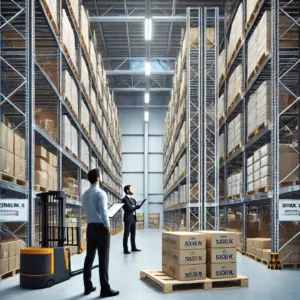
Storage racks might not be the most exciting part of your warehouse setup, but they matter. A lot. Get it right, and your space runs smoother, your team moves faster, and your inventory stays safe. Get it wrong, and you’ll be dealing with headaches you didn’t sign up for.
So before you commit to anything, it’s worth pressing pause and asking yourself a few key questions. Not just about what fits, but what fits you, your space, and how your operation actually works day to day.
What exactly are you storing?
Sounds obvious, right? But it’s surprising how often this gets overlooked. It’s not just about the size of the items. It’s the shape, the weight, the way they’re packed, and how fragile—or awkward—they are. Are you working with full pallets? Small cartons? Long, oversized items that don’t stack neatly?
The nature of your inventory will tell you a lot about what type of storage rack system you need. Some racks are designed for bulk. Others are better for items that need to be picked by hand. And if your products vary widely, you may need a system that can handle a bit of everything.
How often do you need to access your stock?
If you’re constantly pulling from your racks, accessibility becomes just as important as storage space. You might need something with more open access, or a setup that supports a “first-in, first-out” flow to keep older stock from getting buried.
But if you’re storing seasonal inventory or slower-moving items, you can afford to tuck things away in harder-to-reach areas and use higher-density storage.
This isn’t just about efficiency. It’s also about safety and making sure your team isn’t climbing or reaching in ways that put them at risk.
Is your space working with you—or against you?
Before you decide on a racking system, take a good look at your warehouse layout. How high are the ceilings? Where are the access points? Are there columns, pipes, or other obstacles you need to work around?
You also need to think about how people and equipment move through the space. It’s not just what fits on the floor; it’s how that layout supports (or slows down) your operations.
Sometimes, the most efficient setup isn’t about adding more racks, but rethinking how everything is laid out.
Who’s doing the picking—and how?
The way items move in and out of storage should play a big role in your decision. If you’re using forklifts or pallet jacks, aisle width and turning space will be key. If most picking is done by hand, height and shelf accessibility become more important.
Ask yourself: Will the system make your team’s job easier or just more complicated?
The best setups are the ones that support how your people already work, not the ones that require retraining everyone to adapt to the system.
Will this setup still work six months from now?
Warehouses are rarely static. Inventory changes. Business grows. Sometimes fast.
That’s why it’s worth thinking beyond today’s needs. A flexible racking system can adjust with you, whether that means accommodating different products, changing workflows, or expanding storage without starting from scratch.
You don’t need to predict the future. But you do want to avoid locking yourself into something you’ll outgrow before the year is up.
Are you factoring in safety?
Every rack has limits. Weight limits, height limits, and loading practices. And if you’re in an area that deals with earthquakes or heavy weather, there might be additional safety codes to meet.
This isn’t just about compliance. It’s about protecting your team and your inventory. Don’t cut corners here. If anything feels questionable, ask for professional input before making your final decision.
What’s your actual budget?
Everyone wants a good deal. But going with the cheapest option upfront can end up costing you more in replacements, repairs, or extra labor down the line.
It’s worth asking: Is this system going to hold up over time? Is it designed for the kind of wear and tear your operation puts on it? And how easy will it be to maintain?
Budget wisely, not just cheaply. Long-term value matters more than sticker price.
Have you walked through the layout—on paper or in person?
Sometimes it helps to literally walk the space. Sketch out your planned layout, map where things will go, and imagine your team moving through it. Where might things bottleneck? Are there tight turns? Blind spots? Dead zones?
A lot of issues become obvious when you simulate real activity. And catching them now is a lot cheaper than fixing them after installation.
Think Before You Stack
At the end of the day, choosing a storage rack is about how your entire operation flows. How your team works. How your space functions. Taking the time to ask the right questions now can save you a lot of time, money, and stress later.
So, before you start ordering parts or hiring installers, pause. Walk the space. Talk to your team. Think through the details. You’ll end up with a system that actually fits—not just physically, but functionally. And that’s what makes the real difference.




